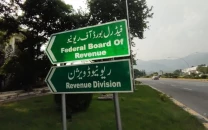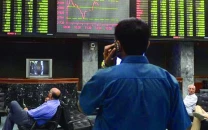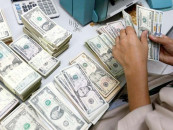Analysis: How Pakistanis are discouraged from savings
Low returns, high inflation erode purchasing power of consumers.

However interestingly, Pakistan actually stands out to reflect one of the lowest savings in the region. According to World Bank, savings in proportion to the country’s Gross Domestic Product stand around 22 per cent in Pakistan, compared to 38 per cent in Bangladesh, 34 per cent in India and 25 per cent in Sri Lanka. Moreover, Pakistan’s savings ratio has actually plummeted from 26 per cent in 2002, while the rest of the comparable nations in the region have shown a consistent increasing trend in savings during the same period.
The State Bank too has raised its red flag on this situation by highlighting in its annual report of FY11-12 that an average consumer allocated Rs97 out of every Rs100 to consumption expenditure in FY11. This implies a marginal savings rate of just 3 per cent in FY11 compared with over 30 per cent in FY01-08.
This behavioral shift at consumer level is, to a large extent, a result of increasing prices (inflation) which is not accompanied by a proportional increase in the return that commercial banks offer to the masses on their savings. To put things into perspective, the average return on deposits offered by the commercial banks stood at a dismal 6 per cent in 2011 which means that a person who deposited Rs100 in a bank at the start of 2011 only managed to grow his savings to a meagre Rs106 by the end of the year.
However during the same year, inflation as measured by CPI stood at 12 per cent – implying that a basket of goods that cost Rs100 at the beginning of 2011 was worth Rs112 by the end of the year. Hence an average person would have lost purchasing power of his savings, if he had used the banking channel to deposit his hard-earned wealth.
In light of these facts, it is not surprising that an average Pakistani prefers to spend whatever he earns, rather than saving part of it for rainy days, retirement age or his/her children’s college education. The affluent segment of the society which, however, does manage to save prefer to remit their money abroad (mostly through illegal channels) and invest their savings in Dubai, Singapore and Switzerland – thus leading to unabated flight of capital and strain on Pak rupee.
Distressingly, the equation does not end here. Eventually, low savings in the economy translate into low investments and thus higher reliance on foreign aid. In fact, World Bank statistics show that investment to GDP ratio in Pakistan stood at 15 per cent in 2010, once again the lowest amongst comparable nations in the region (in 2011, investment to GDP ratio stood at 35 per cent in India, 28 per cent in Sri Lanka and 24 per cent in Bangladesh).
On the flip side, the commercial banks appear to be the only segment reaping the benefits of this scenario. According to the SBP, the banking sector’s profitability has grown at an annual average of 21 per cent from 2004 to 2010. This has largely been a result of hefty “spreads” that the banks charge on their operations. Spread is the difference between average lending and deposit rates that the banks offer to their customers, and stood at 7.6 per cent in 2011.
This figure is not only one of the highest in the world, but also flags Pakistan as the only country in the region where a bank earns more than what the actual depositor is offered on his deposit.
The writer is a CFA and graduate of LUMS with experience in the financial services industry.
Published in The Express Tribune, April 18th, 2012.


















COMMENTS
Comments are moderated and generally will be posted if they are on-topic and not abusive.
For more information, please see our Comments FAQ